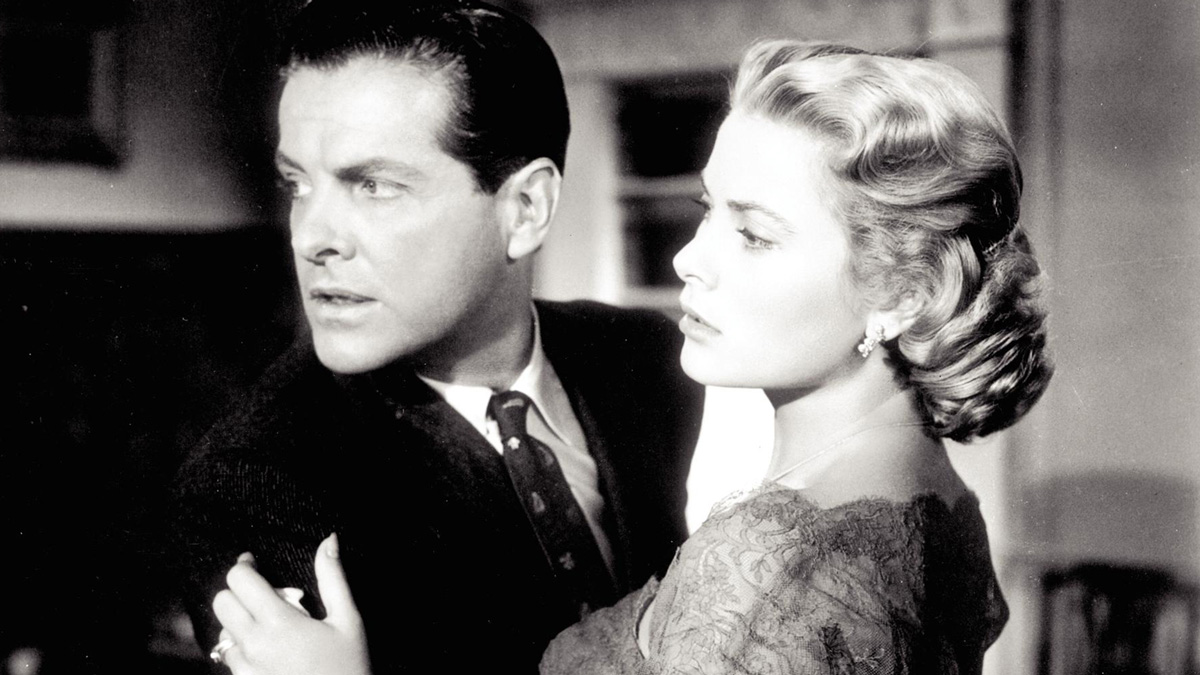
(c)1997 Warner Bros., Monarchy Enterprises BV and Regency Entertainment (USA) Inc. All rights reserved.
Understanding the relationship between Hitchcock and 3D from Hitchcock's only 3D film, ``Turn Dial M!''
2019.03.13
“Turn Dial M!” Synopsis
The relationship between Margo (Grace Kelly), the daughter of a wealthy family, and her husband Tony (Ray Milland), a retired tennis player, has completely cooled down. Moreover, Margo is having an affair with Mark (Robert Cummings), a TV writer. Tony, who originally married Margo for her wealth, would be in trouble if she divorced him, so he threatens Lesgate (Anthony Dawson), a college alumnus and a small-time scoundrel who is in trouble for money, and suggests that he murder his wife. Tony himself planned to go to a party with Mark at the time of Lesgate's crime and establish an alibi. However, Margo resists and stabs Lesgate to death with scissors, causing her plan to fail.
Index
- “Turn Dial M!” was a fantastic 3D movie.
- Background to the project “Turn Dial M!”
- The beginning of the first 3D movie boom
- Warner Bros. bet its fortune on 3D
- Were the 3D movies of the 1950s an overproduction?
“Turn Dial M!” was a fantastic 3D movie.
``Turn Dial M!'' (54) may not be called Alfred Hitchcock's masterpiece, but it is definitely a masterpiece of subversive mystery. As you can see from the fact that he filmed `` Rear Window '' in the same year, this is one of his more mature films. A remake of `` Dial M '' (1998) was made by director Andrew Davis, and it has been made into a TV movie many times.
It was also Hitchcock's first and only 3D film. Despite this, Hitchcock understood the benefits of 3D and used it to great effect. As I mentioned in the episode of `` Hugo '' (11), Martin Scorsese, the film's director and avid 3D enthusiast, owns a 35mm print of the 3D version of ``Turn Dial M!'' He even showed it to the staff at ``Hugo's...'' and had them study it.
' Hugo' Scorsese preview
However, the 3D version of ``Turn Dial M!'' was actually released to the public on November 1, 1979 (*1) at the Tiffany Theater (*2) (1) in West Hollywood. In the 26 years since the 2D version was released, Hitchcock has tended to avoid commenting on the 3D version. For example, in a conversation with François Truffaut in 1962 (2), he said, ``I don't think there's much to say about that ('Turn the dial M!'). Let's go,'' he says, giving off the feeling that he doesn't want anyone to touch this work.
As a result, critics continue to spread the interpretation that ``Hitchcock hated 3D movies.'' For example, biographer Donald Spoto, who was the first to criticize all of Hitchcock's works, writes in his book `` The Art of Hitchcock: 53 Films '' (3) that he ``detailed his pacing, acting, and 3D...'' The film, which deserves praise for its refusal to succumb to the bizarre mechanics of cinema, is meticulously designed to be extremely concise, with no superfluous scenes." Perhaps Spoto is trying to say, ``The 3D movies that were popular at this time all had strange pop-up effects, but Hitchcock was not influenced by such frivolous trends.'' . But is this interpretation (*3) correct?
*1 Hitchcock passed away 180 days later, on April 29, 1980.
*2 Strictly speaking, there was one 3D preview at Philadelphia's Randolph Theater on May 18, 1954, and four 3D previews on the following day, the 19th. This theater was chosen as the screening venue because it was equipped with a 22m x 9m silver screen and four projectors, allowing continuous screening without intermission. Due to the poor reviews from the press at the time, Warner Bros. decided to release the film to the general public from May 29th only in 2D. (*1)
*3 Incidentally, Spoto began researching Hitchcock in 1972 (3), and he wrote this based solely on his imagination without seeing the 3D version of ``Turn Dial M!''. In any case, authoritative film critics seem to feel like they have a mount if they criticize the tendency to rely on technology.

